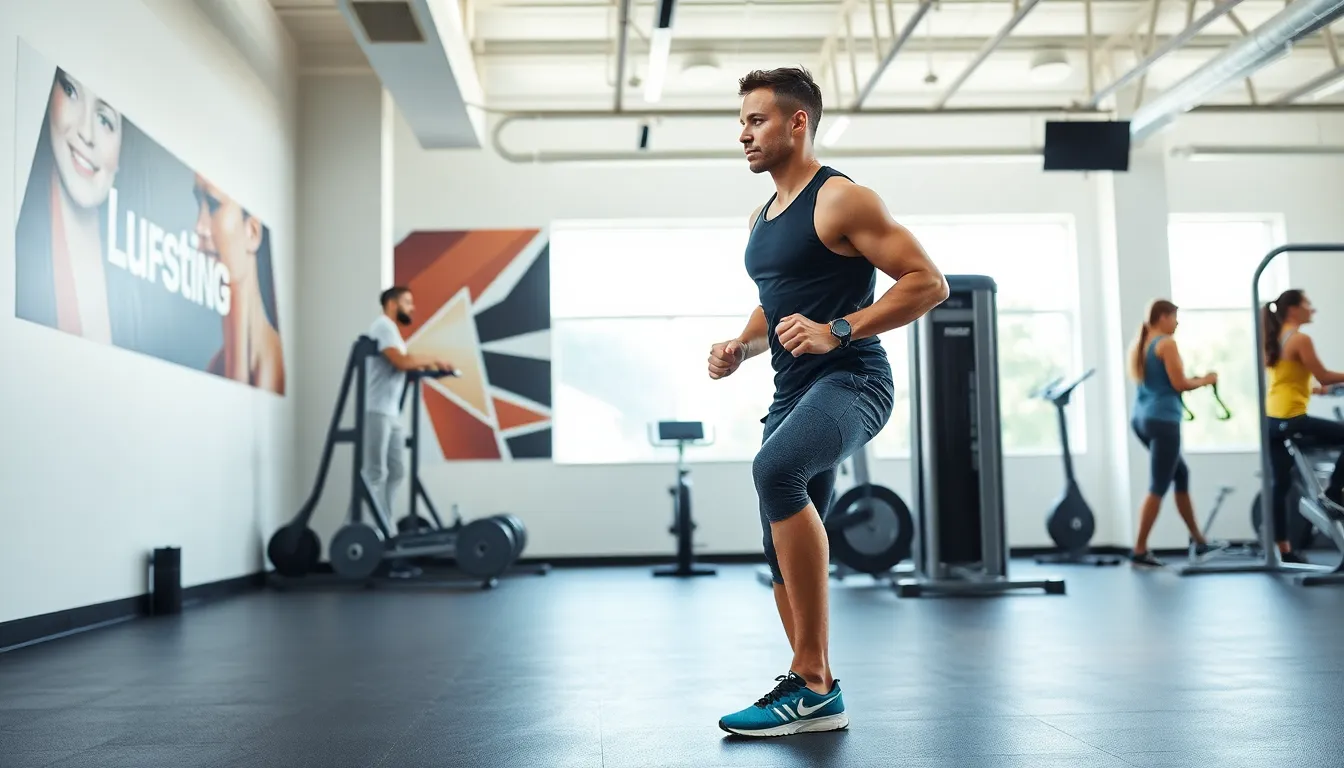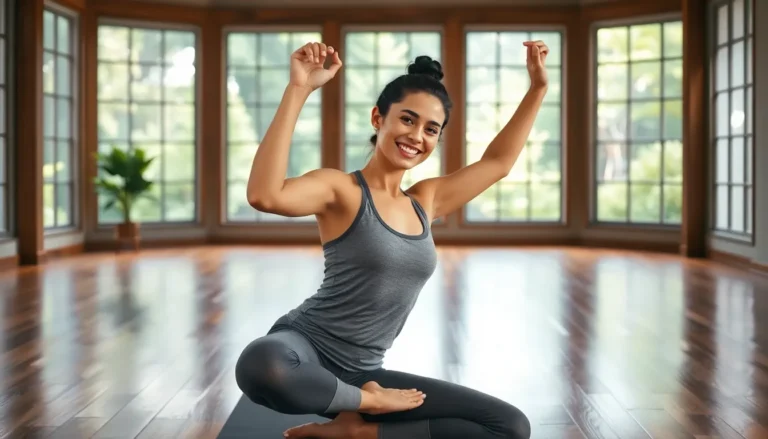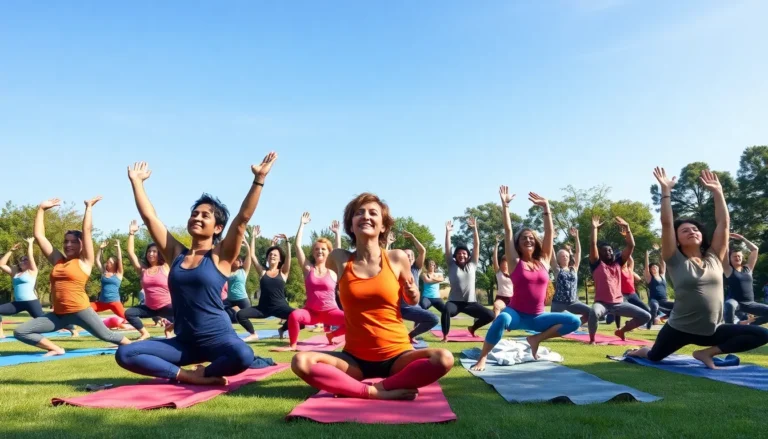Table of Contents
ToggleWhen it comes to fitness, comfort is the unsung hero of success. Picture this: you’re gearing up for a workout, but your clothes feel like a medieval torture device. Spoiler alert: that’s not the way to crush your goals. Fitness comfort is all about finding the sweet spot between style and functionality, ensuring you can squat, stretch, and sprint without feeling like a pretzel.
Understanding Fitness Comfort
Fitness comfort refers to the sensation of ease and freedom of movement experienced during physical activity. It encompasses both clothing choice and the overall environment, affecting performance.
Definition of Fitness Comfort
Fitness comfort includes the physical sensations individuals experience while exercising. This concept largely focuses on the materials and fit of workout clothing, which contribute to a person’s ability to move without restriction. Soft, breathable fabrics enhance the experience, while well-fitted designs prevent distractions during workouts. Choosing the right footwear also plays a crucial role, as it impacts stability and reduces the risk of injury. Prioritizing these elements leads to a more enjoyable and effective fitness routine.
Importance of Comfort in Fitness
Comfort remains essential in fitness for several reasons. Firstly, uncomfortable attire can limit movement, making it difficult to achieve workout goals. Quality gear helps maintain focus on exercise, allowing individuals to concentrate on their routines without distractions. Comfortable clothing also supports proper posture and body alignment during various activities, which reduces the likelihood of injuries. Moreover, feeling good in workout attire can boost confidence and motivation, leading to a more consistent fitness regimen. For many, striking a balance between style and functionality enhances both the physical and mental aspects of exercise.
Key Factors Affecting Fitness Comfort

Fitness comfort hinges on several vital factors, including clothing choices, footwear considerations, and environment setup. Each aspect plays a crucial role in ensuring an optimal workout experience.
Clothing Choices
Selecting the right workout clothing significantly impacts comfort levels. Fabrics designed for breathability and moisture-wicking reduce sweat accumulation, thus enhancing freedom of movement. Loose-fitting garments prevent chafing and offer flexibility during various activities. Compression apparel supports muscle stability and improves circulation. Prioritizing seamless construction can minimize irritation, promoting a pleasant workout atmosphere. Additionally, styles that align with personal taste can boost motivation, encouraging consistent exercise.
Footwear Considerations
Choosing appropriate footwear directly influences fitness comfort. Shoes with proper arch support and cushioning alleviate pressure on joints during impact activities. Styles designed specifically for running, cross-training, or weightlifting cater to distinct movement patterns, optimizing performance. Ensuring an accurate fit remains paramount; shoes that are too tight or too loose can lead to discomfort or injuries. Selecting breathable materials enhances ventilation and reduces moisture build-up, supporting overall foot health during workouts.
Environment Setup
Creating a conducive workout environment fosters fitness comfort. Adequate lighting should illuminate the space, while proper ventilation enhances airflow, keeping temperatures regulated. Personal preferences, such as music or motivational visuals, can elevate mood and concentration. A clutter-free area promotes focus, minimizing distractions during exercises. Ensuring access to necessary equipment allows for smooth transitions between activities, making the workout more efficient and enjoyable.
The Role of Equipment in Fitness Comfort
Equipment significantly influences fitness comfort. Properly designed gear can enhance overall performance while minimizing discomfort.
Ergonomic Designs
Ergonomically designed equipment improves support and fits individual biomechanics. These designs prioritize user comfort, allowing for natural movement during workouts. Cushioned grips, contoured shapes, and adjustable settings contribute to a more personalized experience. At the same time, incorporating breathable materials enhances airflow, reducing sweat buildup. Selecting equipment with these features can lead to a more focused workout and allow individuals to push their limits without distraction.
Impact of Technology on Comfort
Technological advancements play a key role in enhancing fitness comfort. Smart materials, such as moisture-wicking fabrics, regulate body temperature effectively. Wearable technology offers real-time feedback, helping users optimize their workouts and adjust equipment accordingly. Innovations like self-adjusting shoes deliver a precise fit during exercise, preventing blisters or discomfort. Additionally, connectivity features in fitness gear encourage users to track their progress, fostering motivation and engagement. By leveraging technology, individuals can elevate their workout experiences and maintain higher levels of comfort.
Personalizing Your Fitness Comfort
Personalizing fitness comfort requires attentiveness and adaptability to individual preferences. Tailoring solutions to specific needs can significantly enhance the workout experience.
Listening to Your Body
Listening to your body plays a critical role in achieving fitness comfort. Awareness of how muscles and joints respond during exercise prevents discomfort. Attuning to signs of fatigue, strain, or soreness signals when to adjust intensity or take breaks. Monitoring physical sensations can guide choices in clothing, nutrition, and hydration. For instance, an individual noticing chafing may need to switch to seamless options or moisture-wicking fabrics. Adjusting workouts based on energy levels ensures sustainable progress and reduces injury risks.
Adjusting to Individual Needs
Adjusting to individual needs enhances overall comfort and performance. Customizing workout attire, such as selecting the right size and fit, prevents distractions and empowers movement. Exploring various types of footwear ensures minimal joint pressure and optimal arch support. Some may prefer supportive cushioning, while others enjoy lightweight options. Creating a personalized workout environment also matters; controlling temperature, lighting, and sound enhances focus and enjoyment. Embracing flexibility in workout routines allows individuals to prioritize comfort while maintaining effectiveness.
Fitness comfort is more than just a luxury; it’s a necessity for anyone serious about their workout routine. By prioritizing comfort through thoughtful clothing choices and proper footwear individuals can significantly enhance their performance and overall experience.
Creating a personalized environment that caters to individual preferences further supports this journey. Whether it’s adjusting the lighting or selecting the right music every detail contributes to a more enjoyable workout.
Ultimately embracing fitness comfort fosters motivation and encourages consistency making it easier to achieve fitness goals. By investing in comfort individuals not only protect their bodies but also cultivate a positive mindset towards their fitness journey.







